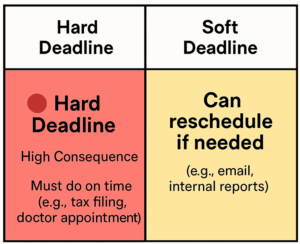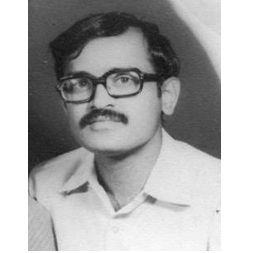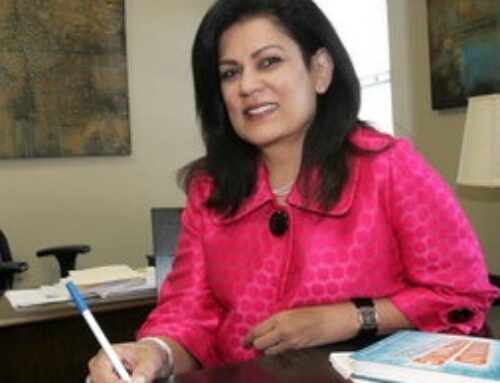KCS Murti is the embodiment of a Karmyogi—one who finds fulfillment in work done with quiet mastery. Over the course of more than 44 years, KCS has carved out a rare career that spans public broadcasting, military training, scientific research, software innovation, and university teaching—with each phase rooted in discipline and the joy of learning.
A graduate of JNTU (BE Electronics) and BITS Pilani (ME Electronics), his journey began through the prestigious Indian Engineering Services (IES), joining All India Radio in 1974, where he contributed to India’s nascent television era. He then served as an Assistant Professor at the Military College of Telecommunications Engineering, where he trained signal officers
For nearly two decades, KCS worked as a scientist at CEERI Pilani, rising from Scientist C to F. Here, he led work in digital mapping, GIS, real-time systems, smart sensors, and industrial automation, which led him to a career at Intergraph as a Software Expert, where he helped develop sophisticated GIS platforms and 3D terrain modeling systems.
From 2010 to 2018, KCS served as Visiting Faculty at BITS Pilani’s Hyderabad Campus, teaching embedded systems, reconfigurable computing, microprocessors, and advanced computer organization. His teaching culminated in a globally used book on embedded systems, born out of decades of hands-on experience and intellectual rigor, published by Springer.
With his trademark fast walking, sharp thinking, and humble service to learning, KCS continues to be an inspiration—not just for what he’s done, but for how he’s done it: with grace, consistency, and excellence.
Interview with KCS
RK: Your career has been a journey of sustained growth, almost like an elite mountaineer conquering a series of Eight-Thousanders—each summit demanding new skills, resilience, and reinvention. Let’s start with an overview of that.
KCS: I come from a modest background. My father was a primary school teacher who lost his job early on, but he gave me something invaluable—discipline, and the habit of climbing steadily. That helped me stay on top during school and sparked the lifelong pursuit of knowledge, one step at a time.
I ranked 21st in the state and earned a scholarship that helped me pursue electronics engineering at Government College of Engineering, Kakinada. I also had the option to go into medicine, but I chose engineering and later completed my M.Tech from BITS Pilani.
I started as an IES officer, then became a professor in a military college, later a scientist at CEERI in Pilani, and eventually moved into the software and GIS space with Intergraph. I also continued to teach throughout, including at BITS Hyderabad until I turned 68.
RK: You have an interesting career progression. Let’s go deeper
KCS: Sure. Before going there let me say this. I attribute my career progression and growth to several of my friends, professors, and colleagues, who closely watched my passion and suggested some great career moves that I followed. They never let me feel absence of any godfather figure in my life.
It was 1974, and TV had just begun transmission in Calcutta. I joined All India Radio and later moved to the research department in Delhi where I worked on early color TV and FM transmitter projects.
Teaching telecom to signal officers at the defense college was transformative. Their discipline rubbed off on me. It shaped my personality and punctuality. Those habits never left me.
At CEERI, I worked on electronics research for 17 years. Simultaneously, I taught microprocessors and integrated electronics at BITS as adjunct faculty. A professor—my senior—invited me to teach, and I enjoyed applying industrial research knowledge in the classroom. Their vision for industry-academic synergy deeply influenced me.
One early project was digitizing Survey of India’s photogrammetry instruments to generate 3D maps—at a fraction of the cost of new systems. Later, at Intergraph, I worked on GIS and design file solutions. My final academic stretch at BITS Hyderabad focused on embedded systems. It was a perfect intersection of electronics and software.
Between 2019 and 2020, I pulled together all my lecture material into a book on embedded system design principles. It’s now used by universities globally.
RK: Reflecting on your journey, what core values have kept you climbing instead of hanging up your boots too early? What mindset or principles allowed you to transition from one summit to the next, sustaining momentum across decades?
It is the intoxication! After a while, gaining knowledge, applying it and then further building more knowledge on it keeps you engaged in the game and you don’t want to bow out, as long as this is working for you.
KCS: It is the intoxication! After a while, gaining knowledge, applying it and then further building more knowledge on it keeps you engaged in the game and you don’t want to bow out, as long as this is working for you. Climbing every step requires new knowledge and practice. The knowledge required varies at each step. So, the principle is “Ask a question yourself, what you learned today?”
RK: What are the core habits and rituals that have helped you stay productive throughout your career?
KCS: I believed in being an extrovert while selling my ideas, which helped me in my career. You get the right opportunities only when you evangelize your ideas well and not just working quietly.
RK: You are highly punctual and respect time. How do you ensure that meetings, commitments, and deadlines are always honored?
KCS: When I was an Assistant Professor at the Military College teaching signal officers, I learned punctuality from them. Whether it was a lecture or an end-of-day gathering, every officer arrived on time—without exception. It made me understand why some countries require every graduate to serve at least a year in the defense forces: the discipline they instill is unmatched.
RK: Do you have a golden rule when it comes to managing time efficiently?
KCS: I always think of real-time systems when I look at my tasks. In computing, real-time systems are designed to respond to inputs within strict timing constraints. Failure to meet those deadlines can be catastrophic in hard real-time systems (like airbags or pacemakers), while soft real-time systems (like video streaming) can tolerate occasional misses.
In life, tasks work similarly. A task’s deadline is considered hard if missing it leads to serious consequences, and soft if it can tolerate occasional delays without major impact. Recognizing this distinction is key to effective prioritization.
Tasks need to be written down—whether in a notebook or on a smartphone. I personally plan a day ahead. When unexpected or sporadic tasks show up, I ask myself: Can I fit this in without compromising my existing priorities? If the answer is no, I decline it. This approach brings clarity and reduces both time waste and mental clutter.
RK: While being deeply committed to work, you also make time for life. What guiding philosophy helps you strike this balance?
KCS: Treat personal and professional commitments as equals. Prioritize based on impact. Many people get this wrong—they postpone the wrong things. It goes back again to Real time systems. one must prioritize the tasks such that tasks are completed without any catastrophe.
RK: What’s your go-to wellness routine (workouts, diet, mindfulness) that keeps you mentally and physically sharp? How has it evolved over time?
KCS: Several factors—genetics, financial stability, and personal discipline—have played a role. I was a 100-meter sprinter until the age of 25, a badminton player until 50, and now I continue to stay active through brisk walking. I usually walk on the Osmania University campus, where I enjoy interacting with young students. I ask them thought-provoking questions and encourage them to come back with answers the next time we meet.
RK: Are there any non-work activities (hobbies, passions) that contribute to your effectiveness at work?
KCS: Hobbies should bring self-satisfaction. Mine include gardening, listening to classical Carnatic music, cooking (I do half the cooking at home, nowadays), and tailoring—I learned after retirement and now stitch my own shirts. YouTube has been a great teacher. Travel has taken a backseat recently since I care for my 95-year-old mother.
RK: Who have been your biggest role models, and what lessons have you drawn from them?
KCS: My role model was my maternal grandfather. I observed and appreciated his daily activities during my childhood (5-10 years). It gave great impact on me how to manage time, be active, and behave and do constructive activities. That’s why I tell today’s parents: your behavior at that age of your children leaves a lasting imprint on them. Many parents are glued to their phones. Children mimic what they see.
RK: I’ve always seen you as someone constantly on the move—quick steps, quick breaks, even quick smokes :). Was that pace something you consciously cultivated? Has it helped or challenged you over the years? And do you see it as a strength, a habit, or something you’ve tried to balance out??
KCS: I was an athlete anyway and then after rubbing shoulders with the army officers further deepened my habit of moving fast. Now it’s part of me. I walk at 5 kmph. When my wife and I walk, I always ask her to stay a little ahead of me. Many times people ask me why I am lagging behind, and I tell them, “నేను ఎప్పుడూ ఆమె అడుగుజాడలను అనుసరిస్తాను” (I always follow her footsteps).
RK: Some say success is luck, others say it’s hard work. What role do you think each has played in your journey?
KCS: Both. Ideally, 80% should be knowledge, effort, and intuition; 20% can be luck. The opposite is not good. Now you are betting!
RK: If you could share one message with professionals seeking long-term success, what would it be?
KCS: I always suggest that young people cultivate a long-term vision—look 30 to 40 years ahead and imagine where you want to be. From that distant point, work backwards to define short-term, actionable goals. Along the way, identify mentors who can guide you through key decisions at the right time and place.
 A Tool from KCS’s Productivity Arsenal
A Tool from KCS’s Productivity Arsenal
⏱️ Real-Time Systems Thinking

KCS applies a metaphor from computing to real life: treat your tasks like a real-time system. Classify them as hard (must be completed on time to avoid serious consequences) or soft (can be delayed occasionally without major harm). This framework helps prioritize effectively, avoid burnout, and make smarter decisions when unexpected tasks pop up.



